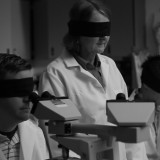ADDRESSING THE SOARING SUICIDE RATES AMONG BLACK ADOLESCENTS
Grim statistics from the Centers for Disease Control and Prevention (CDC) on suicide among young people indicate that Black youth under 13 are twice as likely to die by suicide compared to their white peers, and the suicide death rate among Black youth is increasing faster than any other racial or ethnic group. The disturbing reality leads scientists to wonder if Black adolescents are properly represented in suicide research, the path to finding answers and possible solutions to the tragic increase.

Carla Sharp, John and Rebecca Moores Professor of Psychology, has published findings of two research projects that conclude “The perspectives of Black youth are egregiously underrepresented” in research.
“Without adequately powered studies, disparities in treatment efficacy for Black youth cannot be compared or addressed, and the existing disparity in suicidal outcomes for Black youth will grow even larger,” reports University of Houston researcher Carla Sharp, John and Rebecca Moores Professor of Psychology and director of the Developmental Psychopathology Lab, in the journal Research on Child and Adolescent Psychopathology. Sharp and colleagues have published two recent articles on such intervention research.
In “Quantifying the Representation of Black Adolescents in Suicide Intervention Research,” the research team sought to evaluate Black youth representation in terms of equity of inclusion (the inclusion of Black youth in research study samples at a rate consistent with the overall national rate of Black adolescents in the U.S.) and equity of intervention efficacy (evaluating the presence of racial disparities in intervention efficacy/effect sizes). The authors also evaluated whether an association existed between funding status of research and representation of Black youth in studies.
To accomplish this, Eric Sumlin, a graduate student who recently graduated from the clinical psychology program, reviewed 22 studies. The conclusion: Much more work is needed.
“Research clearly points to the omission of Black youth in the literature that guides treatment development. Out of 22 studies identified, only one was able to investigate treatment outcomes for suicide in Black youth specifically,” reports Sharp. “Further results showed the prevalence of Black youth included in studies was a median inclusion rate of 13%.”
In “Cultural Consensus Modeling to identify culturally relevant reasons for and against suicide among Black adolescents,” published in the journal Suicide and Life-Threatening Behavior, Sharp’s team provides an evidence-based approach for developing a culturally informed understanding of suicide risk among Black youth.
For this study, 50 Black adolescents completed a study listing reasons for suicide and reasons for living among similar peer Black youth.
The most common reasons for suicide were racism (40%), depression (32%), poverty (26%) and bullying (22%). The most common reasons for living were family (58%), having a purpose or goals (36%), friends (30%) and hope for a better future (26%). Responses highlighted issues of racism and social justice, depression and poverty, as well as the protective role of relationships, living for the future, and contributing to Black empowerment.
“Cultural consensus modeling offers a useful empirical tool to elevate the voices of Black youth, improving extant theories of suicide, and identifying unique mechanisms or opportunities for prevention,” Sharp concluded.
In 2019 the Congressional Black Caucus released its report, “Ring the Alarm, The Crisis of Black Youth Suicide in America,” calling for the National Institutes of Health to fund more Black scientists and initiate a research agenda focused on the identification of risk and protective factors related to suicide among Black youth with the ultimate aim of preventing Black youth suicide
“The perspectives of Black youth are egregiously underrepresented in extant theoretical and empirical research of suicidal thoughts and behaviors,” said Sharp.














